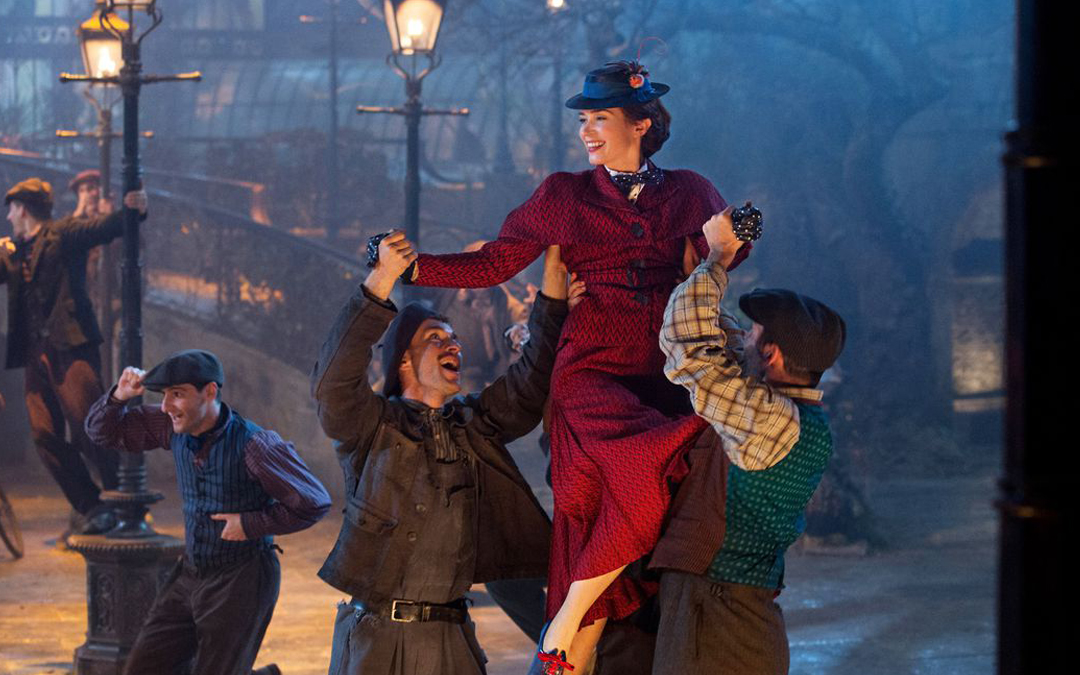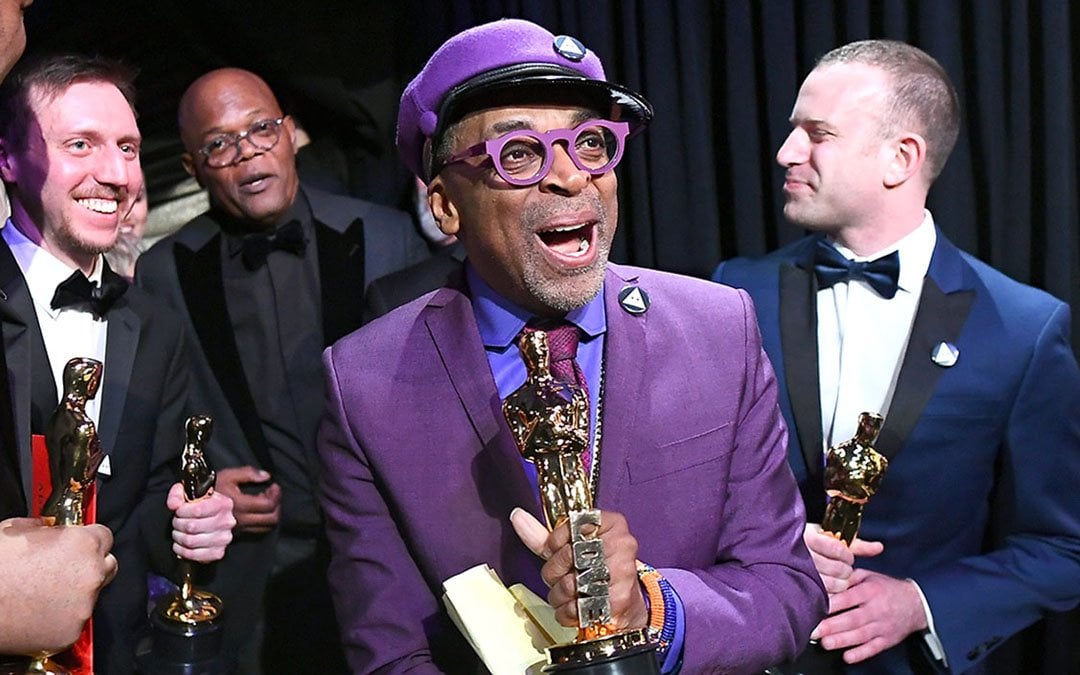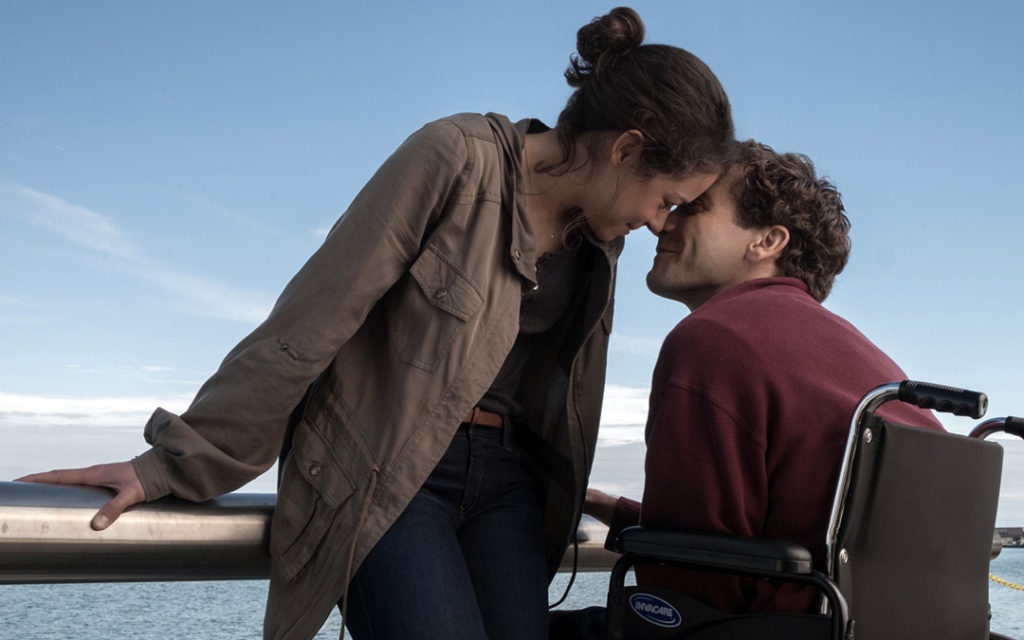All the Write Moves: 'BlacKkKlansman'
August 20, 2018
An outrageous crime story based on real events, BlacKkKlansman ranks alongside director Spike Lee’s most entertaining and vital films, even though he didn’t develop the material. Producers acquired the memoir upon which the film is based, commissioned a screen storyline, and hired Lee to revise the script and direct. It’s hard to imagine anyone serving this material better, because BlacKkKlansman is an incendiary story about race.
According to his 2014 memoir Black Klansman, Ron Stallworth became the first African-American officer in the Colorado Springs Police Department in 1972, then talked his way into a job as a detective.
Upon noticing a recruitment ad for a local chapter of the Ku Klux Klan, Stallworth began a relationship with a Colorado Springs bigot. Then Stallworth arranged for his fellow policeman, a white man named Flip Zimmerman, to pose as “Ron Stallworth” for in-person meetings. The subterfuge helped prevent a murder while leading to a bizarre encounter between Stallworth and KKK Grand Wizard David Duke.
Although the script for BlacKkKlansman (credited to Charlie Wachtel, David Rabinowitz, Kevin Willmott and Lee) takes liberties with history, Stallworth contends that many of the film’s most startling moments really happened — such as when he tricked Duke into posing with him for a chummy snapshot. BlacKkKlansman is alternately funny, reverent, surprising and terrifying, partially for what it recaptures about American life circa 1972 and partially for what it says about how the problems of that time remain today.
Like the best of Lee’s films, BlacKkKlansman is a call to action wrapped inside a wildly entertaining movie experience. Of special relevance for screenwriters are the tools that Lee and his collaborators use to make hard-hitting messages palatable. After all, messages don’t mean much unless they’re received, and most people don’t buy movie tickets to hear political diatribes.
Screenwriters who hope to imbue their work with cultural relevance can and should learn a great deal from BlacKkKlansman.
Off to see the wizard
In the movie, Duke is played by Topher Grace, best known as likable dork Eric Forman in the long-running sitcom That ’70s Show. It’s easy to believe Duke makes an impression in BlacKkKlansman simply because it’s a familiar actor playing against type. That’s true, but it’s not the whole truth. The film’s writers took special care while crafting their portrayal of Duke, who remains visible on the fringes of American culture, spewing the same hatred he did in the ’70s.
The film rightly engages with the idea of David Duke, which is much more important than the man himself. The real David Duke matters because he’s effective at motivating like-minded people, so the film examines how a seemingly friendly and self-effacing individual maintains a cult predicated on racial animus.
The screenwriting technique employed here involves keeping Duke at a distance. First introduced during a phone call, he appears periodically until dominating the picture’s final act. Yet even when he’s not onscreen, Duke looms in the sense that he represents the national organization of which the Colorado Springs chapter is one small part.
Narratively, it helps that circumstances create a suspenseful situation in which Duke’s trip to Colorado increases the risk of the local KKK discovering the truth about Stallworth.
To understand how beneficial it can be to keep an important character offscreen, think of Colonel Kurtz (Marlon Brando) in 1979’s Apocalypse Now. He’s the subject of intense conversations for nearly two hours before appearing onscreen for just a few minutes. The same principle applies to BlacKkKlansman — illustrating the influence a character has on other people can be even more powerful than attempting to directly dramatize that influence.
For Lee’s purposes, this technique also permits him to portray the KKK’s Grand Wizard as an abstraction instead of a dimensional person, although the writers inject their version of Duke with glimmers of (twisted) humanity.
Takeaway: Talking about an offscreen character creates anticipation for the character’s onscreen appearances
The agony and the ecstasy
There’s something gloriously absurd about the way Stallworth began his undercover scheme, so it would have been possible to make a comedic version of this story. It also would have been possible to make a gritty version in the vein of Kathryn Bigelow’s recent drama Detroit, accentuating the horrors of racial violence through excruciating realism.
That’s not the path the folks behind BlacKkKlansman took; they opted for something much more complicated. The funny parts of Stallworth’s story play funny. The scary parts play scary. And the infuriating parts have a special tone of their own. As he has many times before — most famously in his 1990 masterpiece Do the Right Thing — Lee takes the audience on a journey through powerful emotions.
The BlacKkKlansman scene in which Stallworth (John David Washington) dances with his love interest, college radical Patrice (Laura Harrier), is among the most jubilant sequences in Lee’s filmography, a courtship ritual set to the classic soul jam “Too Late to Turn Back Now” by Cornelius Brothers & Sister Rose. Yet the closing moments of BlacKkKlansman, which draw a line connecting Duke’s vile discourse of the ’70s and the shocking real-life events that occurred last year in Charlottesville, represents Lee at his grenade-launching best.
Real life is messy. Something terrible can happen on a great day, and something great can happen on a terrible day. The same should be true of movies. Relentless frivolity is just as monotonous as relentless earnestness. More importantly, too much of any one tonality lulls audiences into passive viewing, whereas the BlacKkKlansman approach keeps viewers active.
Takeaway: Even the heaviest stories need tonal variety
The Trump card
None who are familiar with Lee’s work will be surprised by his take on the presidency of Donald J. Trump. During interviews promoting BlacKkKlansman, Lee has called Trump a dangerous racist. But it’s not as if Lee pointlessly steers these conversations toward current events — BlacKkKlansman is explicitly designed as a commentary on the Trump era, up to and including the Charlottesville allusion. At various points in the film, Duke chants “America first” and talks about making the country great again. The implications are not subtle.
Nor should they be. The point here is not to advocate for one political perspective over another, but to celebrate Lee and his collaborators for taking a position, even though doing so will alienate some viewers. Since BlacKkKlansman is an inherently political film, playing it safe — making the picture into an inoffensive museum piece — would have been cowardly.
And if BlacKkKlansman gets people angry, guess what? That’s the point. Lee didn’t latch onto this obscure ’70s event simply because it was interesting; he did so because it was painfully applicable to the Divided States of America in 2018.
Takeaway: To underscore why a historical story is relevant, draw clear parallels to current events
Written by: Peter Hanson
Peter Hanson is a Los Angeles-based writer, filmmaker and teacher. He directed the screenwriting documentary Tales from the Script, and he teaches at Pepperdine University and UCLA Extension. He provides script consulting at www.GrandRiverFilms.com.- Topics:
- Screenwriting & Craft




